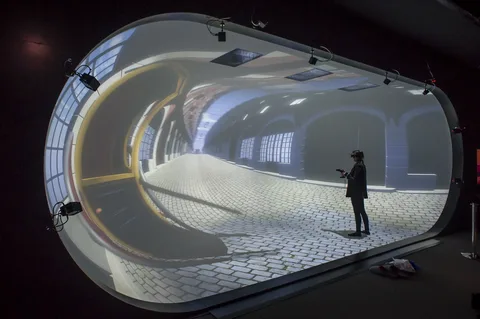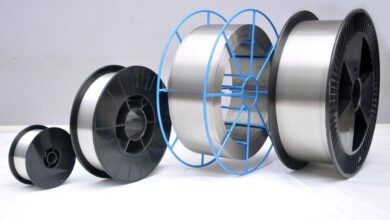Fog Screen: A Revolutionary Display Technology for Immersive Experiences

In the world of cutting-edge technology, the fog screen stands out as one of the most innovative and captivating display solutions. A fog screen creates the illusion of an image or video floating in mid-air, seemingly without any physical surface to support it. This technology uses a fine mist of water vapor to create a translucent screen upon which images and videos can be projected, offering a stunning visual experience that feels futuristic. The result is an interactive, immersive display that draws viewers into a unique and engaging environment.
In this article, we will explore the concept of fog screens, how they work, their applications across different industries, the benefits and limitations of the technology, and the future potential of fog screen displays.
What is a Fog Screen?
A fog screen is a display technology that projects images or videos onto a thin layer of fog or mist, creating a surface that appears to float in the air. Unlike traditional screens made of solid materials like glass or fabric, a fog screen consists of microscopic water droplets that are dispersed in the air. When combined with a projection system, the fog acts as a semi-transparent medium that can display high-resolution visuals while allowing viewers to pass through it without any physical obstruction.
The fog is generated by a specialized device that uses water and ultrasonic waves to create a fine mist. This mist is then blown into the air in a controlled manner to form a thin, stable layer of fog that serves as the projection surface. Because the fog is made of tiny water droplets, it can create a screen-like effect that is visible but also ethereal and intangible.
How Does a Fog Screen Work?
The working principle behind a fog screen is relatively simple yet ingenious. The technology relies on three key components: water, ultrasonic waves, and air currents. Here’s how these elements come together to create the fog screen:
- Water Vapor Generation: The fog screen device contains a reservoir of water, which is turned into vapor using ultrasonic waves. These waves break the water into tiny droplets, creating a fine mist. The mist is then released through small nozzles that disperse the vapor evenly.
- Airflow Control: To ensure the mist forms a thin, stable layer that can be used as a projection surface, the device uses controlled airflow. Fans or air jets guide the mist into a flat sheet, creating a screen-like layer that is about one millimeter thick. The airflows are designed to keep the fog layer stable, preventing it from dispersing too quickly.
- Projection of Images: Once the fog layer is formed, images or videos are projected onto it using a standard projector. The fog serves as the screen, and the projected light interacts with the water droplets to display the desired visuals. Because the fog is translucent, the images appear to float in mid-air, creating a mesmerizing effect.
- Interactivity: Some fog screens are designed to be interactive, using sensors or cameras to detect motion. This allows users to interact with the images or videos on the fog screen, such as by swiping their hands through the fog to manipulate the content. This touchless interaction adds an extra layer of engagement, making fog screens ideal for interactive displays, events, and exhibitions.
Applications of Fog Screen Technology
Fog screens have a wide range of applications across various industries, from entertainment and marketing to education and art. The ability to project stunning visuals on a floating, intangible surface makes fog screens an exciting and versatile tool for creating immersive experiences. Here are some of the most common uses of fog screen technology:
1. Entertainment and Events
One of the most popular uses of fog screens is in the entertainment industry. Concerts, festivals, and other large-scale events often use fog screens to create jaw-dropping visual effects that captivate audiences. Whether used as part of a stage performance or as an interactive installation at an event, fog screens add a sense of magic and wonder to any occasion.
Fog screens are also commonly used in theme parks and immersive attractions, where they can display holographic images or create interactive experiences for visitors. For example, a fog screen could project the image of a character or creature, allowing guests to interact with it as they pass through the mist.
2. Marketing and Advertising
Fog screens have become a popular tool for marketers and advertisers looking to create memorable and engaging brand experiences. The technology’s ability to project floating images or videos makes it an ideal platform for attention-grabbing displays that stand out in crowded environments like trade shows, retail stores, or public spaces.
Brands can use fog screens to showcase products, launch new campaigns, or create interactive advertisements that invite customers to engage with the content. The unique and futuristic nature of fog screens ensures that the audience will remember the experience, helping to increase brand awareness and customer engagement.
3. Museums and Exhibitions
In the world of art and education, fog screens offer a new medium for creativity and exploration. Museums and exhibitions can use fog screens to display digital artwork, historical artifacts, or educational content in a dynamic and interactive way. Visitors can pass through the fog, manipulate the visuals, or experience immersive stories that unfold on the floating screen.
For example, a museum might use a fog screen to display a 3D representation of a historical event or to create an interactive timeline where visitors can swipe through different periods of history. This interactive and engaging presentation method helps make educational content more memorable and impactful.
4. Retail and Hospitality
In the retail and hospitality sectors, fog screens are used to create unique and immersive customer experiences. High-end hotels, restaurants, and luxury boutiques may use fog screens to display promotions, welcome messages, or ambient visuals that enhance the atmosphere. Retail stores can use fog screens in window displays to attract passersby with eye-catching, floating images or interactive product demonstrations.
In the hospitality industry, fog screens can also be used for virtual concierge services, where guests can interact with a projected display to get information about the hotel, book services, or explore local attractions.
Advantages of Fog Screen Technology
Fog screen technology offers a number of advantages over traditional display systems. Its unique ability to project images onto a translucent, floating surface opens up new possibilities for immersive and interactive experiences. Here are some of the key benefits of using fog screens:
1. Immersive Visuals
Fog screens provide a highly immersive visual experience that is unlike any other display technology. The floating, ethereal nature of the projected images creates a sense of wonder and intrigue, making it ideal for creating memorable experiences. Viewers are often captivated by the illusion of images floating in the air, which enhances engagement and leaves a lasting impression.
2. Touchless Interactivity
Many fog screens can be equipped with sensors that allow for touchless interaction. Users can wave their hands through the fog to manipulate the content on the screen, creating an interactive experience without physical contact. This feature is especially useful in environments where touchscreens are not practical or where hygiene is a concern.
3. Flexible and Versatile
Fog screens can be used in a wide range of settings, from small indoor venues to large outdoor events. The technology is flexible and can be adapted to suit different applications, whether for entertainment, marketing, education, or art. The screen can be adjusted in size, shape, and orientation, allowing for creative displays that fit any space.
4. Unique and Memorable
Fog screens stand out as a unique and futuristic display method. The novelty of the technology makes it memorable, which is particularly valuable for brands looking to make an impact at events, exhibitions, or public spaces. The immersive and magical nature of fog screens ensures that audiences will remember the experience long after they’ve seen it.
Limitations of Fog Screen Technology
While fog screens offer numerous advantages, there are also some limitations to consider. These challenges may affect the practicality of using fog screens in certain environments or applications:
1. Environmental Sensitivity
Fog screens are highly sensitive to environmental conditions. Factors such as wind, temperature, and humidity can affect the stability of the fog layer, causing the screen to become distorted or dissipate. For this reason, fog screens may not be suitable for outdoor use in windy or extremely dry environments.
2. Limited Visibility in Bright Light
Fog screens rely on projected light, and their visibility can be affected by the ambient lighting in the environment. In bright conditions, such as outdoors during the day, the projected images may not be as visible or sharp. Fog screens work best in dimly lit or controlled lighting environments where the projection can stand out clearly.
3. Maintenance and Water Usage
Because fog screens rely on water vapor, they require regular maintenance to ensure the mist is properly generated and dispersed. Water reservoirs need to be refilled, and the system needs to be cleaned periodically to prevent clogs or malfunctions. In areas where water conservation is a concern, the constant use of water vapor may be a drawback.
The Future of Fog Screen Technology
As technology continues to evolve, fog screens are likely to become more advanced, accessible, and widespread. Improvements in projection technology, sensor integration, and environmental control could help address some of the current limitations of fog screens, making them even more versatile and reliable.
In the future, fog screens could be used in even more creative applications, from immersive virtual reality experiences to augmented reality displays. As industries such as entertainment, retail, and education continue to embrace interactive and immersive technologies, fog screens will likely play a key role in shaping the future of digital displays.
Conclusion: The Magic of Fog Screens
Fog screen technology offers a revolutionary way to display images and videos, creating an unforgettable experience that blurs the line between the real world and digital content. Whether used in entertainment, marketing, education, or hospitality, fog screens captivate audiences with their floating visuals and interactive capabilities. While there are some challenges to overcome, the potential of fog screens to create immersive and engaging experiences is undeniable.



